Asian Currencies Firm On Dollar Weakness After FOMC But Oil Prices Cap Gains
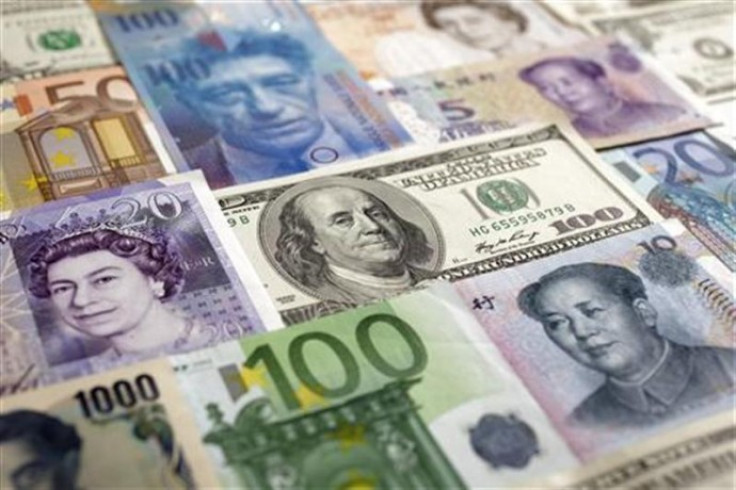
Asian currencies have slightly strengthened as the Federal Reserve slashed the US growth outlook and signalled no change in its current monetary policy, weakening the greenback, but the continuing Iraq crisis and related oil price pressures capped the Asian units' gains.
Wednesday's FOMC (Federal Open Market Committee) remarks have improved risk appetite too, as prospects for a more liquid US dollar increased the outlook for equities globally. At 06:40 GMT, Japan's Nikkei 225 traded 1.62% higher at 15,361.16.
The USD/INR on Thursday dropped to 59.81, from 60.27 at close on Wednesday, and the USD/IDR fell to 11,925 from 12,000. Both the pairs had hit multi-week highs this week as the civil war in Iraq significantly increased global oil supply concerns.
India's rupee and Indonesia's rupiah are the worst hit currencies in the region, thanks to the heavy impact on their import bills due to oil price rises.
The rupee was 3.8% weaker from its mid-May high of 58.23 when it traded at 60.53 on Tuesday. The rupiah was 6.3% weaker at 12,045 on Wednesday from the early April peak of 11,280.
The US dollar index, the gauge that measures the greenback's strength against currencies of the six largest trading partners of the US, dropped to a 10-day low of 80.35 on Thursday, from Tuesday's close of 80.60.
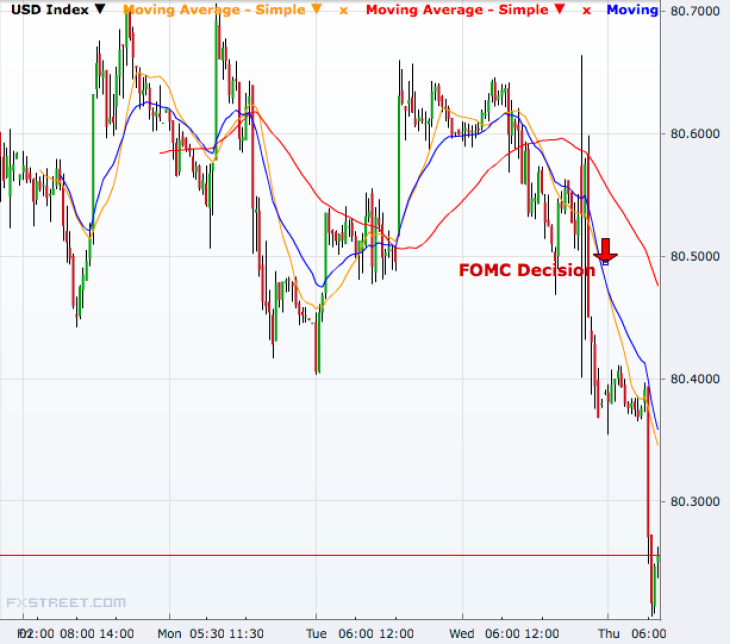
"When the committee decides to begin to remove policy accommodation, it will take a balanced approach consistent with its longer-run goals of maximum employment and inflation of 2%," the FOMC said.
"The committee currently anticipates that, even after employment and inflation are near mandate-consistent levels, economic conditions may, for some time, warrant keeping the target federal funds rate below levels the Committee views as normal in the longer run."
Thailand's Baht fell to 32.38 from 32.50 and Malaysia's ringgit dropped to 3.2174 from 3.2340 as the dollar's weakness helped the regional currencies.
What Charts Say About Overall Bias
The Indonesian rupiah is clearly looking south on technical charts while India's rupee and Malaysia's ringgit are still on an upward trend that started in January this year.
The USD/MYR is now testing the 38.2% level of the mid-May 2013 to early February this year uptrend and the next levels on the downside are 3.15 (50% level) and 3.10(61.8%).
A decisive break of 3.15 will question the broad uptrend since July 2011 but the road further south to 3.00 and below is really a bumpy one.
The pair has resistance now at 3.26 and 3.30 ahead of the four-year high of 3.35 touched in February.
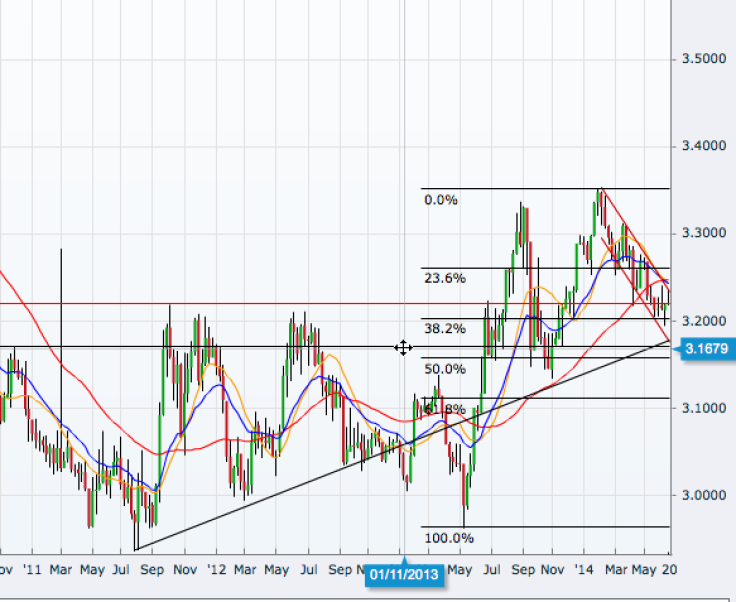
The USD/IDR has broken above the 61.8% retracement of the January-April downtrend and the next level on the higher side is the January peak of 12,270.
On the downside, 11,780 and 11,660 are the levels to watch ahead of 11,520 and 11,280. The break of 11,660 will weaken the uptrend since April.
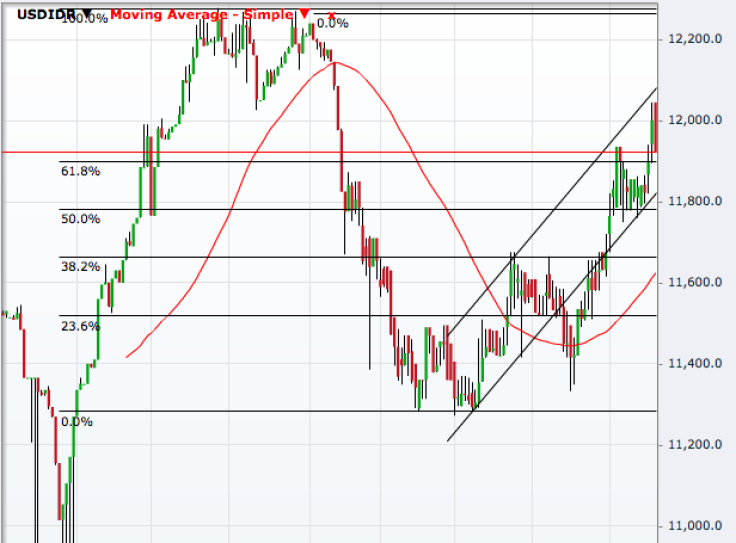
The USD/INR has failed to break above the 60.80-61.20 with the recent advance and it is still keeping the downward channel since January. Only a break above the said resistance range will open new highs like 61.40, 62.00 and 63.50.
On the downside, the pair eyes 58.23, the May low, ahead of 57.50, which is likely to form a channel support in the downward path, and therefore can be a significant level.
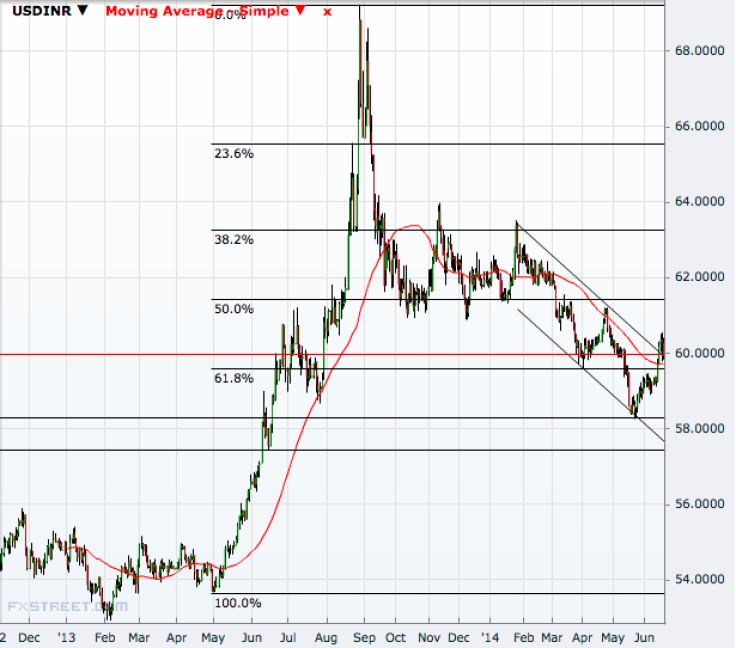
© Copyright IBTimes 2024. All rights reserved.






